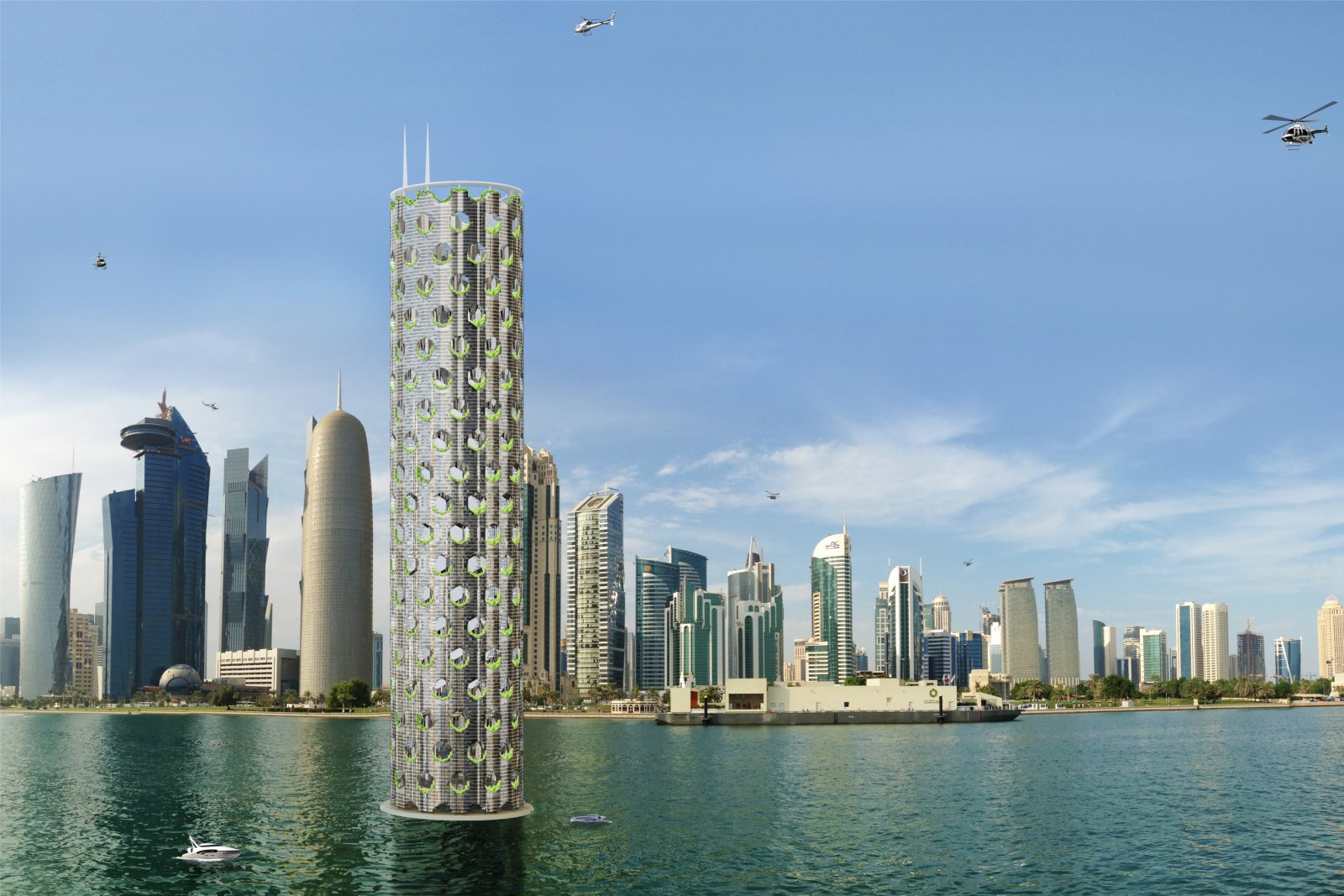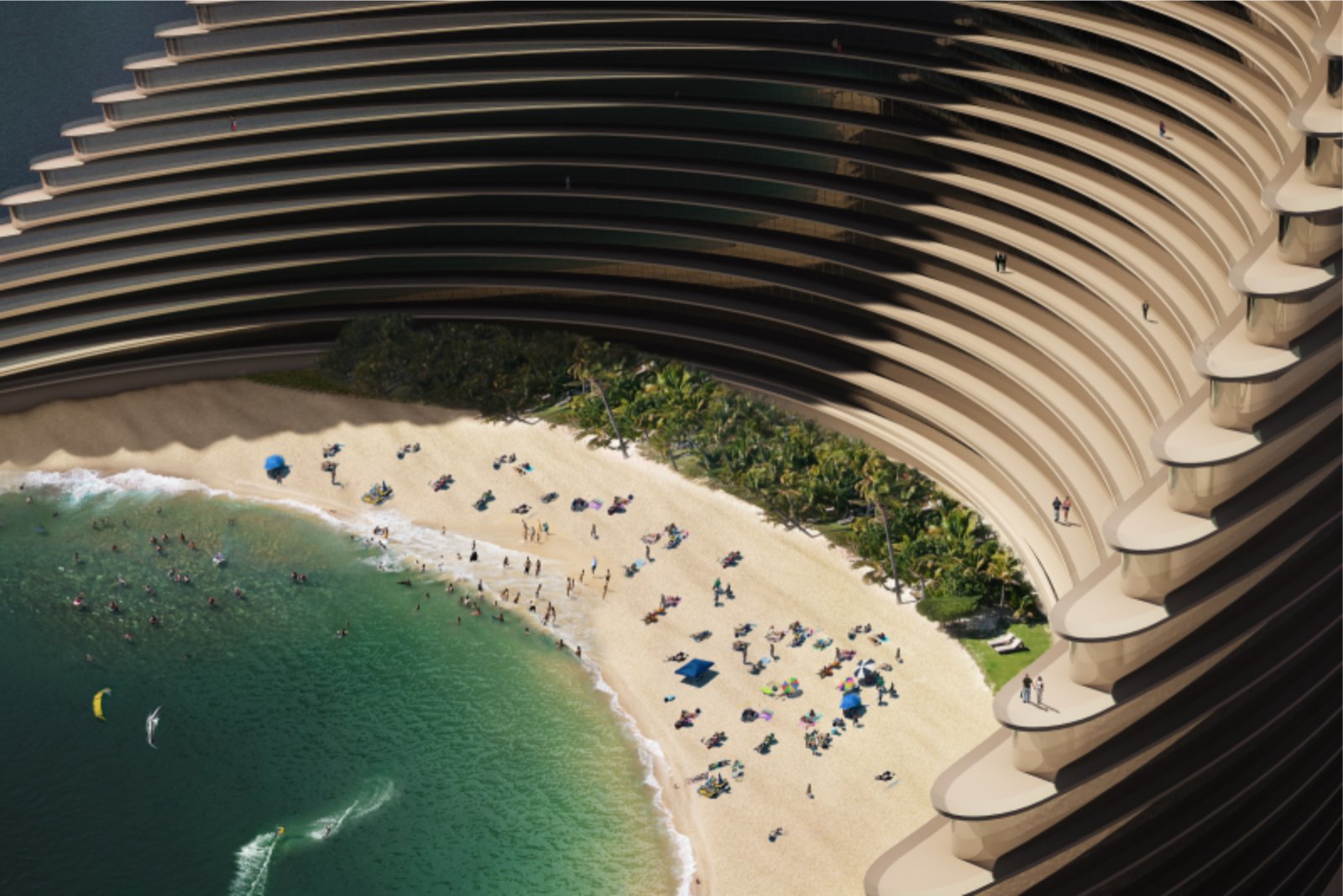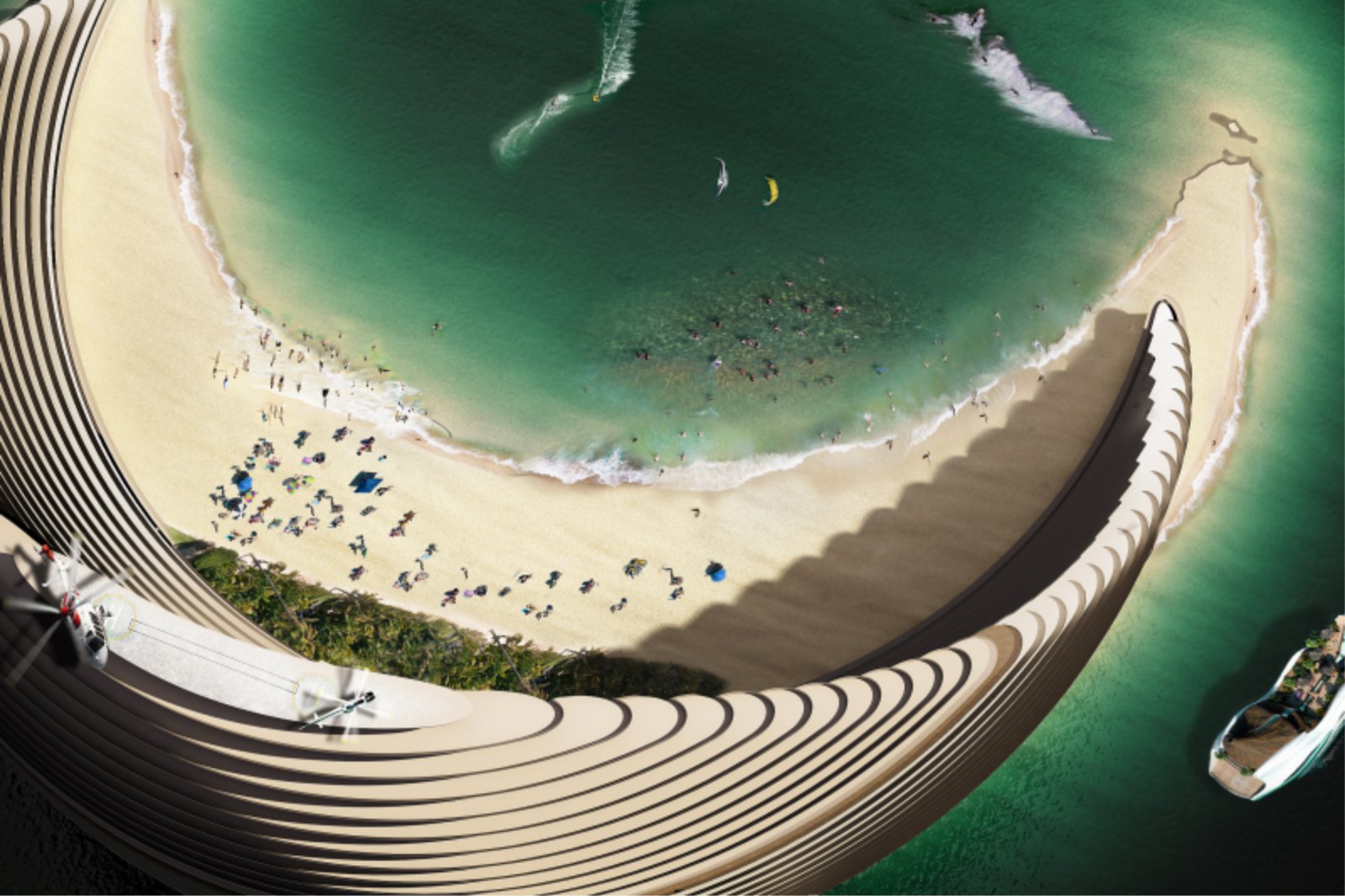Zero-Energy City-Building
Vertical City is a project proposal for a vertical city-building of 25,000 people settled in the water with incorporated a series of renewable energy resources, such as wind, water turbines and solar panels are also incorporated, energy storage solutions and water desalination. Food production and farming integrated and follow a zero-waste policy. The project combines sustainability with population density and it aims to build up a zero-energy city-building.
Starting from the analyses of the contemporary skyscraper, conceived as a compact element, smooth and alienated from the surrounding space, the project has re-interpreted it in an opened structure, equipped with green areas on each level, natural light and ventilation. 100% green transport systems. This new interpretation allows its residents to get into an healthier life-style, in connection with natural elements, re-thinking the traditional concept of community and society.
The City Shape
The building’s structure is based on a modular structural prefabricated element, which is repeatable horizontally as well as vertically. The singular shape of the structural element creates a 3-D network which sustains every single floor. The structure is surrounded by a membrane of photovoltaic glasses which provide electricity to the whole building and make it energy-independent, providing further energy for the buildings on the mainland too.
The city-building is completely perforated to permit the circulation of air and light on each level, hosting green-areas and vertical gardens. Green zones are spread all over the tower, while meeting and social areas are thought for the community life. The city-building consists of 10 modular layers overlapping. It reaches the height of 750 meters, 180 floors, with a total volume of 3.750.000 cubic meters, able to host up to 25.000 people, with a green area of over 200.000 square meters, including the public garden square at the top of the building.
Every modular and repeatable layer is high 72 meters and has an overall diameter of 155 meters, of which 120 meters of empty space inside the building. It consists of 18 floors, 58.000 square meters of floor surface housing homes and services, offices, stores and other facilities. Farming will be integrated with social space and will enable communities to provide their own food and be self-sufficient. Every group of 18 floors will include a community framework for living, including water baths, markets, spiritual and cultural hubs.
Residences have different sizes and shapes for each floor, and they include apartments, duplex and villas. The outside surface, with green areas and gardens, is large 20.000 square meters. The building is settled on the sea bottom, with a series of underwater floors that host parking and technical areas, facilities such as spas, mediation centres and gym and luxury hotels rooms with underwater views. It is possible to reach Vertical City by water, by land or by air.
The circular basement is equipped with external and internal docks and three naval entries: large boats can dock at the external berths, so as permitting public or private smaller boats only, to navigate in the inner gulf. The connection with the mainland is made possible throughout a semi-submersed bridge for pedestrians and public transports, which connect the land with the basement underwater. Moreover, the tower is provided with heliports connected with the upper garden-square and vertical linking-installations.
The Urban System
The main residential city-tower is connected, by water and by air, to the three towers of offices, goverment departments, healthcare facilities and educational institutions, including all levels of schools and universities. The interconnected system also works as a tourist destination. There are other three structures, the Moons, more oriented to the lifestyle amenities such as hotels, welness and spa centres, sport centres, shopping malls, bookshops, and leisure attractions. Source by Luca Curci Architects.
- Location: Middle East
- Archtect: Luca Curci Architects
- Architect in charge: Luca Curci
- Collaborators: Domenico Fallacara, Desiree Sisto
- Total floor area: 800.000 mq
- Images: Courtesy of Luca Curci Architects










